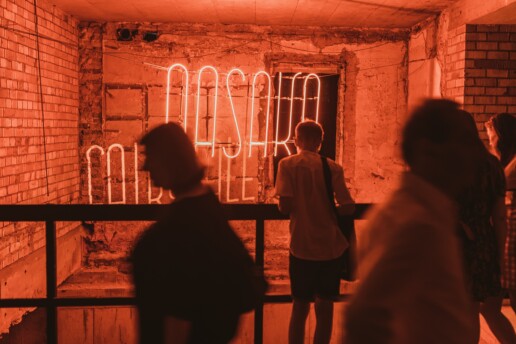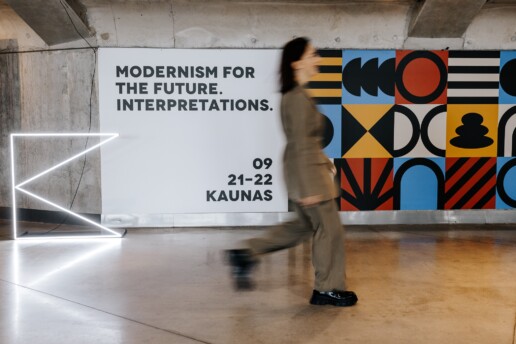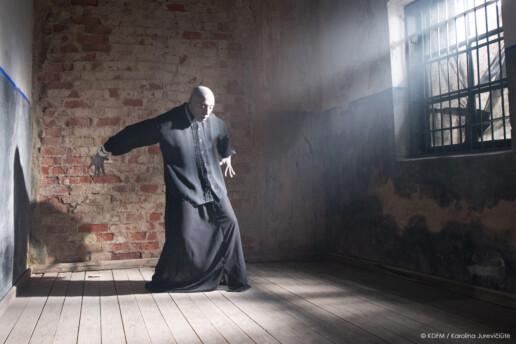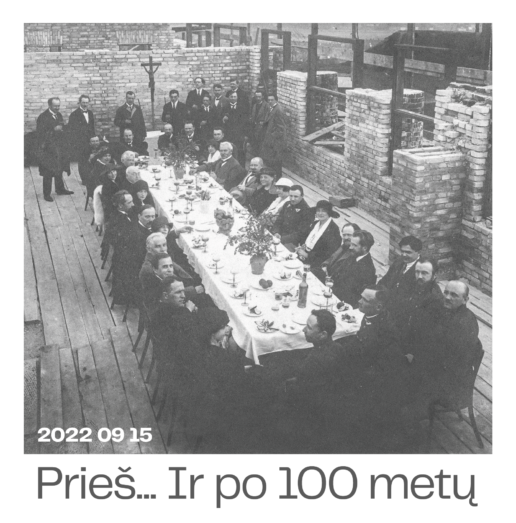World premieres and art in non-traditional spaces: the most important October events in Kaunas
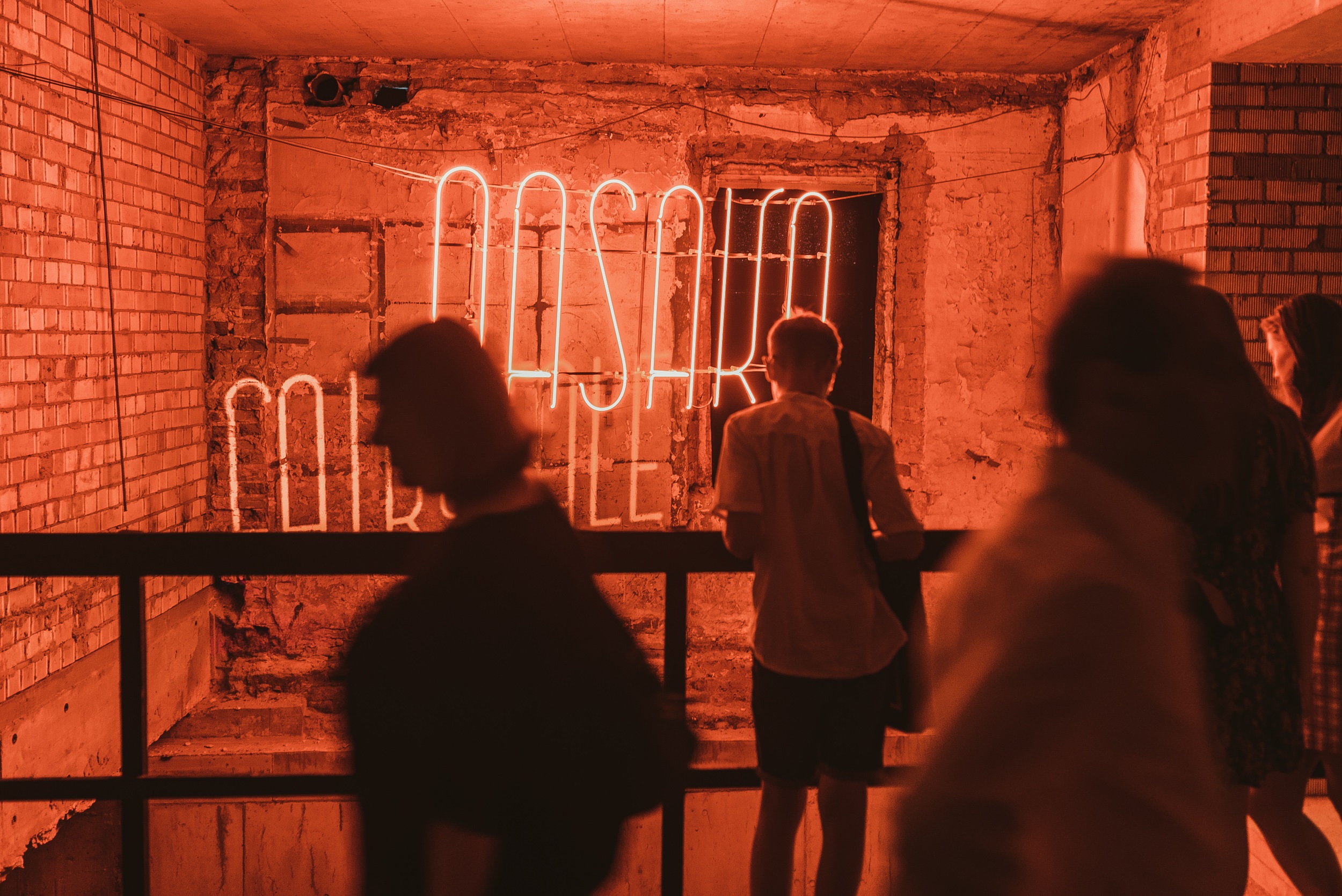
Although the year of the European Capital of Culture in Kaunas is slowly coming to an end, October offers many more inspiring experiences waiting for culture enthusiasts. From design events and exhibitions of world-famous artists to music premieres: “Kaunas 2022” is pleased to share some recommendations on what to see and what not to miss in the autumnal city.
“Woven Art: 20th Century European and American Carpets of the Avant-Garde”
“An exhibition that reveals the spirit of the 20th century through the interwoven synergy of different types of art” - this is how the exhibition “Woven Art: 20th Century European and American Carpets of the Avant-Garde” could be described. The exhibition presents various carpets and collectable furniture created by the world's most prominent artists.
When: 1–14 October
Where: Kaunas Artists’ House
More information is available here.
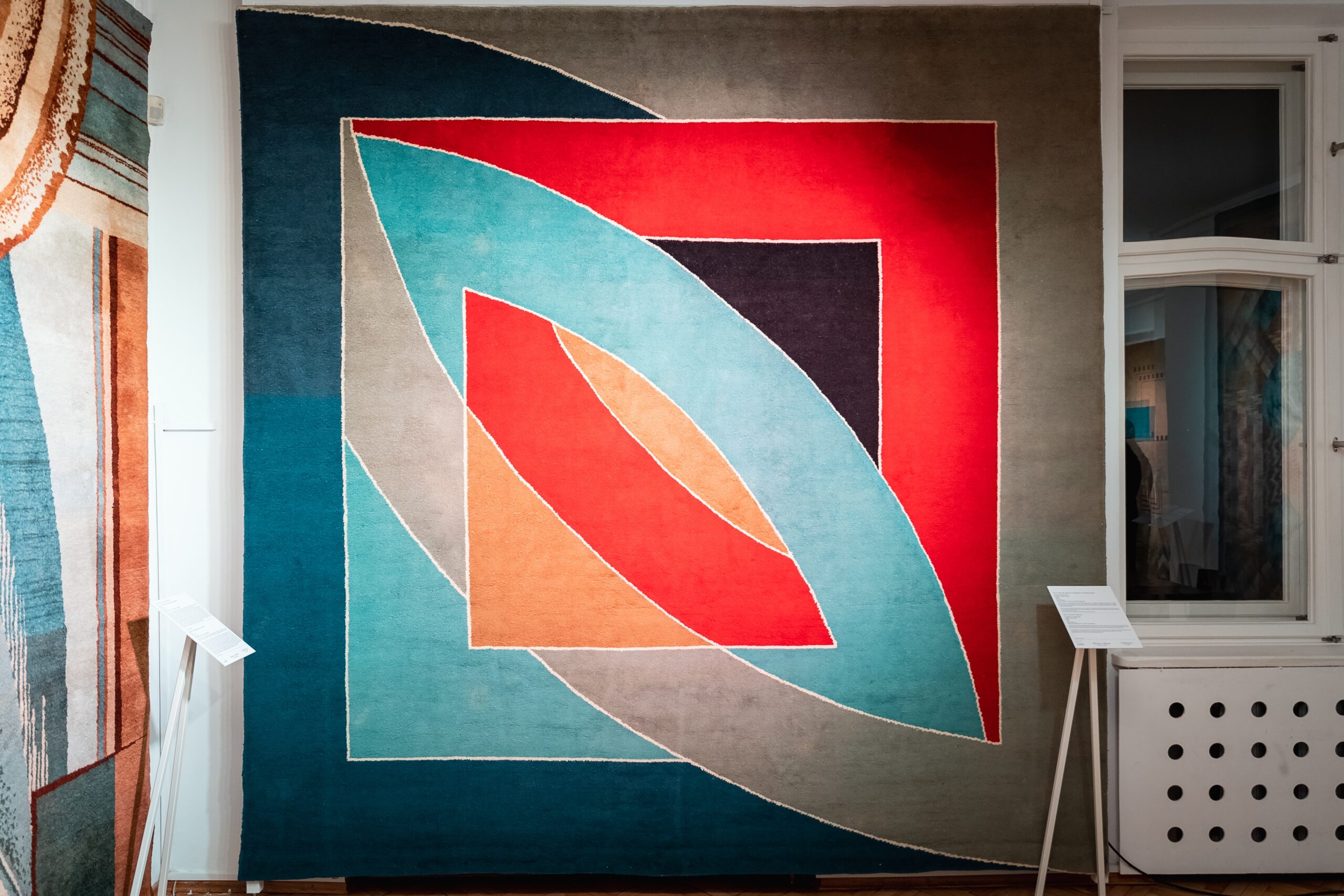
Yoko Ono’s retrospective exhibition “The Learning Garden of Freedom”
The Learning Garden of Freedom is a retrospective exhibition of Yoko Ono’s work organized in collaboration with Studio One in New York, founded by the artist herself, the Contemporary Art Centre in Vilnius, and the Kaunas Picture Gallery in Kaunas. The exhibition presents an overview of Yoko Ono’s works, including various creative periods and practices ranging from conceptual art and experimental films to spatial installations, objects, and performance art.
When: Until 4 December
Where: Kaunas Picture Gallery, K. Donelaičio St. 16
More information is available here.
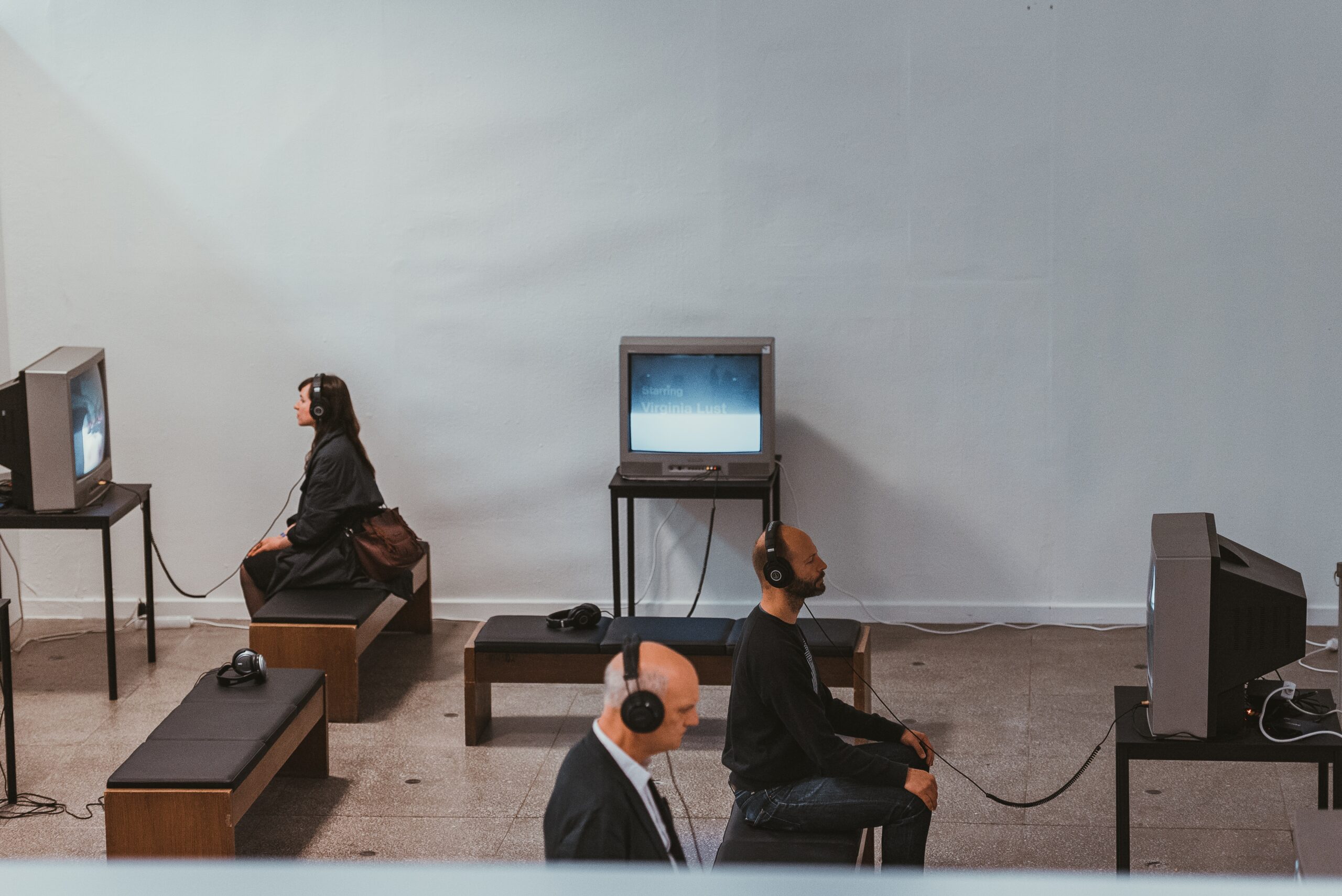
Royal Philharmonic Orchestra concert
Kaunas State Philharmonic Orchestra and Kaunas – European Capital of Culture 2022 present an exclusive international project created with the famous Royal Philharmonic Orchestra and piano virtuoso Simon Trpčeski. The Royal Philharmonic Orchestra, celebrating its 76th birthday this year, is at the forefront of musical life in the United Kingdom (UK), with a mission to enrich the lives of its audiences with the perfect and immersive experience of orchestral music. In the programme: Sergei Prokofiev, Ludwig van Beethoven and Jean Sibelius.
When: 12 October
Where: Kaunas Žalgiris arena
Tickets are available here.
CityTelling Festival. “The Dybbuk”
The CityTelling Festival, aiming to remind the multi-ethnic memory of Kaunas and its surroundings continues and invites to one more premiere. On October 14-15 at the Kaunas cinema centre “Romuva”, the audience will experience a mystical and mysterious event – the musical performance “The Dybbuk”. The performance created by the Kaunas Symphony Orchestra and a group of Israeli actors will combine the fields of music, cinema, and theatre and will tell a love story inspired by Jewish folklore.
When: 14-15 October
Where: Romuva cinema
Tickets are available here.
Forum of International Design Networks
This year, Kaunas can be proud not only of the title of the European Capital of Culture but also of the fact that it is gradually becoming a real centre of the design. This October, for the first time in the country ‘s history, the most important world design organizations will meet in one city. The forum will be attended by such global design networks as the UNESCO Cities of Design Network, ICoD (International Council of Design), BEDA (Bureau of European Design Associations), and EIDD (Design for All Europe). The programme will feature several conferences, workshops, and meetings.
When: 14 October
Where: Žalgiris arena amphitheatre
More information is available here.

Andrew Lloyd Webber’s “Requiem”
On October 31st at Žalgiris arena, Kaunas City Symphony Orchestra and Kaunas – European Capital of Culture will host a Requiem by Andrew Lloyd Webber, one of the most famous contemporary composers and winner of the prestigious Grammy Award for music. Together with the Kaunas City Symphony Orchestra, the audience will see many well-known performers, including tenor Edgaras Montvidas, soloist Kseniya Bakhritdinova-Kravchuk, and the Kaunas State Choir.
When: 31 October
Where: Žalgiris arena
Tickets are available here.
OSTRALE contemporary art exhibition. „Streams upstream“
The OSTRALE Biennale in Dresden is one of the largest contemporary art exhibitions in Germany, organized in non-traditional spaces, initially designed for purposes other than art. “Streams upstream” is the final OUT of OSTRALE event, completing the series of European cultural cooperation project “Flowing connections”. This is an exhibition about globality and all the nowness, unfulfillments and subtexts of this multi-layered phenomenon.
When: 5 October– 13 November
Where: Kaunas Central Post Office
More information is available here.
Interactive exhibition “Out of Darkness”
Artist Jenny Kagan, daughter of Juozapas Kagan and Margarita Štromaitė from Kaunas, grew up in the United Kingdom, surrounded by stories of pre-war and wartime Lithuania. In the exhibition Out of Darkness, she brings the extraordinary story of her parents’ survival in Kaunas during the Holocaust to life. The exhibition’s setting, including images, music, video projections, and other elements, immerses the viewers in a narrative that is both personal and universal.
When: until 30 October
Where: Gimnazijos St. 4
Tickets are available here.
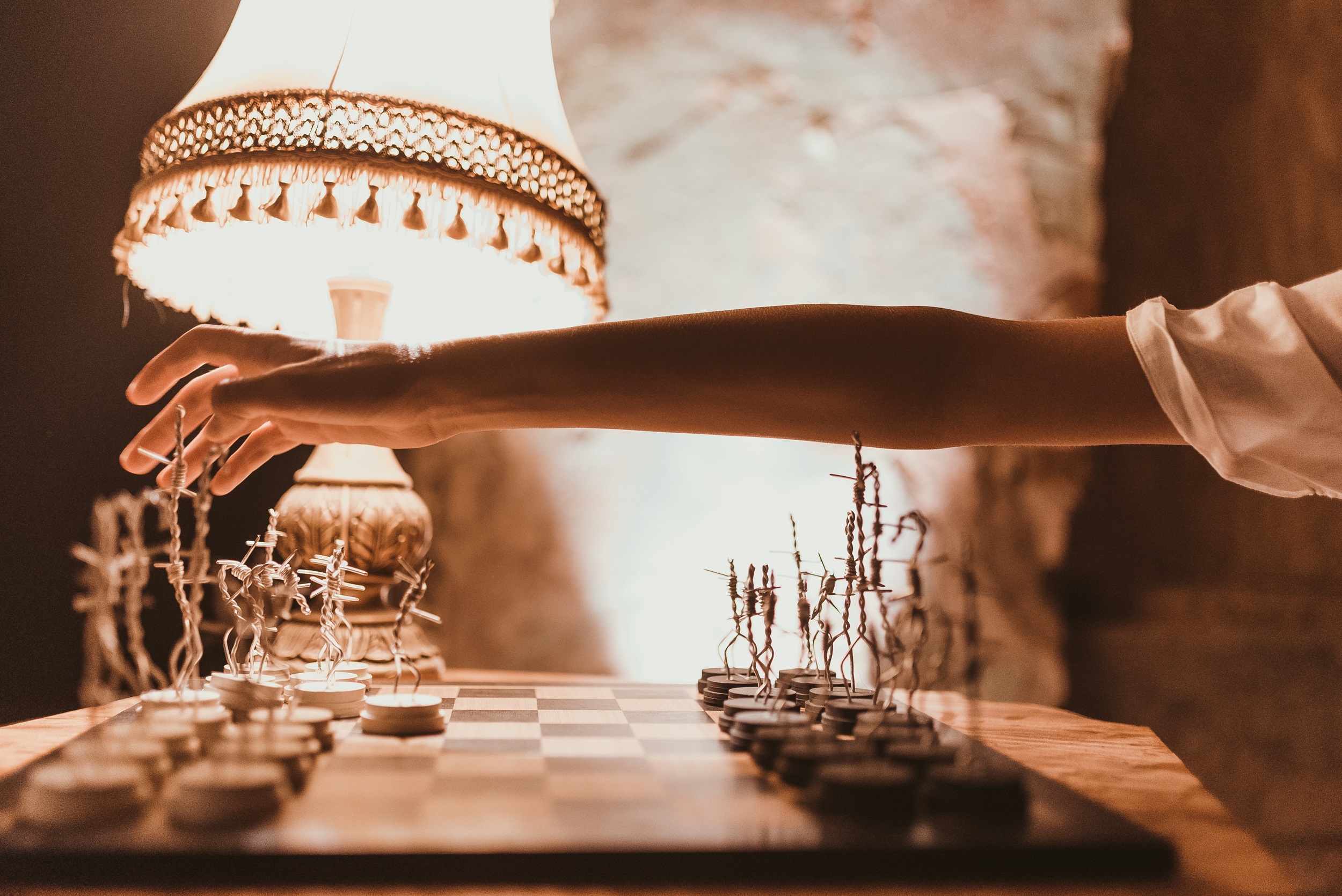
The autumn of culture continues
October events and exhibitions are designed for everyone's taste. A pleasant surprise awaits lovers of porcelain art at the Kaunas Central Post Office - the Exhibition of International Bone China symposium, “the Porcelain City”. Theatre lovers will surely find it interesting to see the performance “Dorian” directed by one of the most famous contemporary theatre figures, artist Robert Wilson. Moreover, the cultural boat “Nemuno7” will complete the series of exhibitions “Fluid Bodies” with authentic interpretations of the theme of ecology. The full Kaunas 2022 programme is available at www.kaunas2022.eu or on the mobile app.
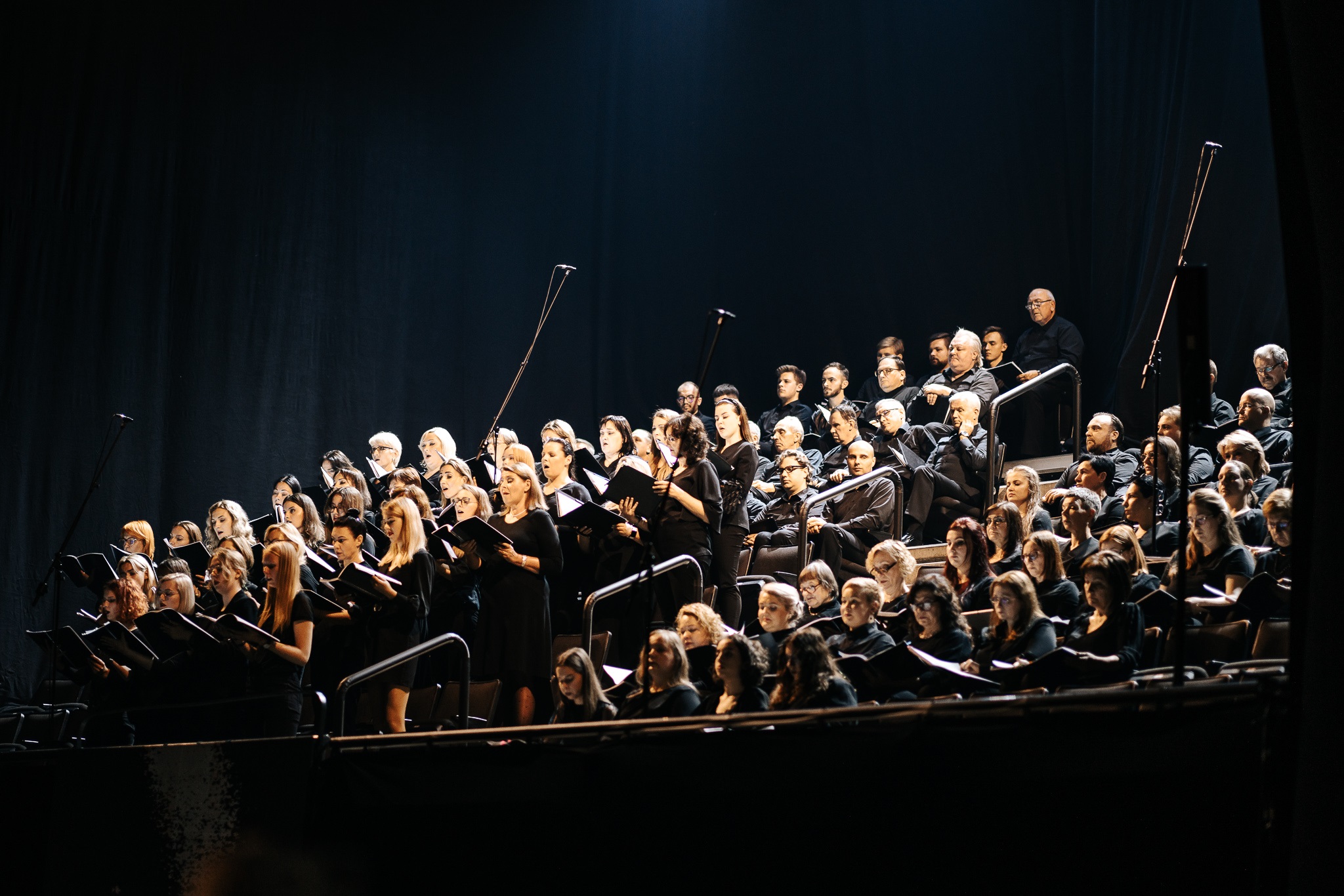
Final Meeting of the “Modernism for the Future” Programme: Multiple Modernities From Kaunas to Manchuria
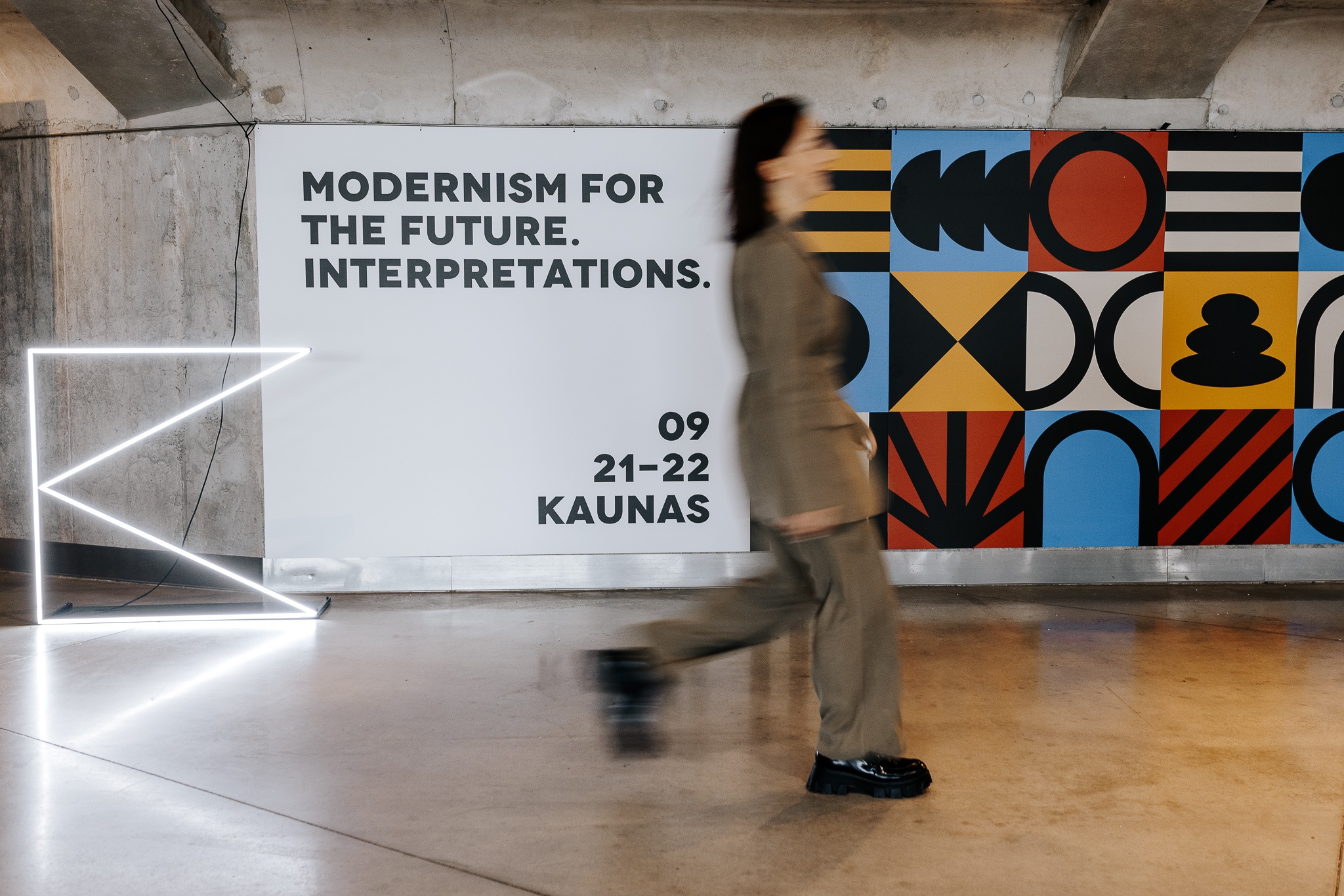
“Architecture is always a dream and a function, expression of utopia and instrument of comfort”, Vaidas Petrulis, one of the organisers of the final conference of the European Capital of Culture’s programme “Modernism for the Future”, opened the event with a quote from the French philosopher Roland Barthes. The event attended by a wide range of thinkers and practitioners to Kaunas offered unexpected ways of talking about the inevitably shared past, present and future of our planet; the history in which architecture plays the role of both antagonist and protagonist.
“Multiple modernisms”. Uta Pottgiesser, professor at Delft University in the Netherlands and head of DOCOMOMO, the international organisation that documents and conserves the heritage of modernism, was the first to use this term to describe an era that has touched the entire planet. The two words became the leitmotif of the day.
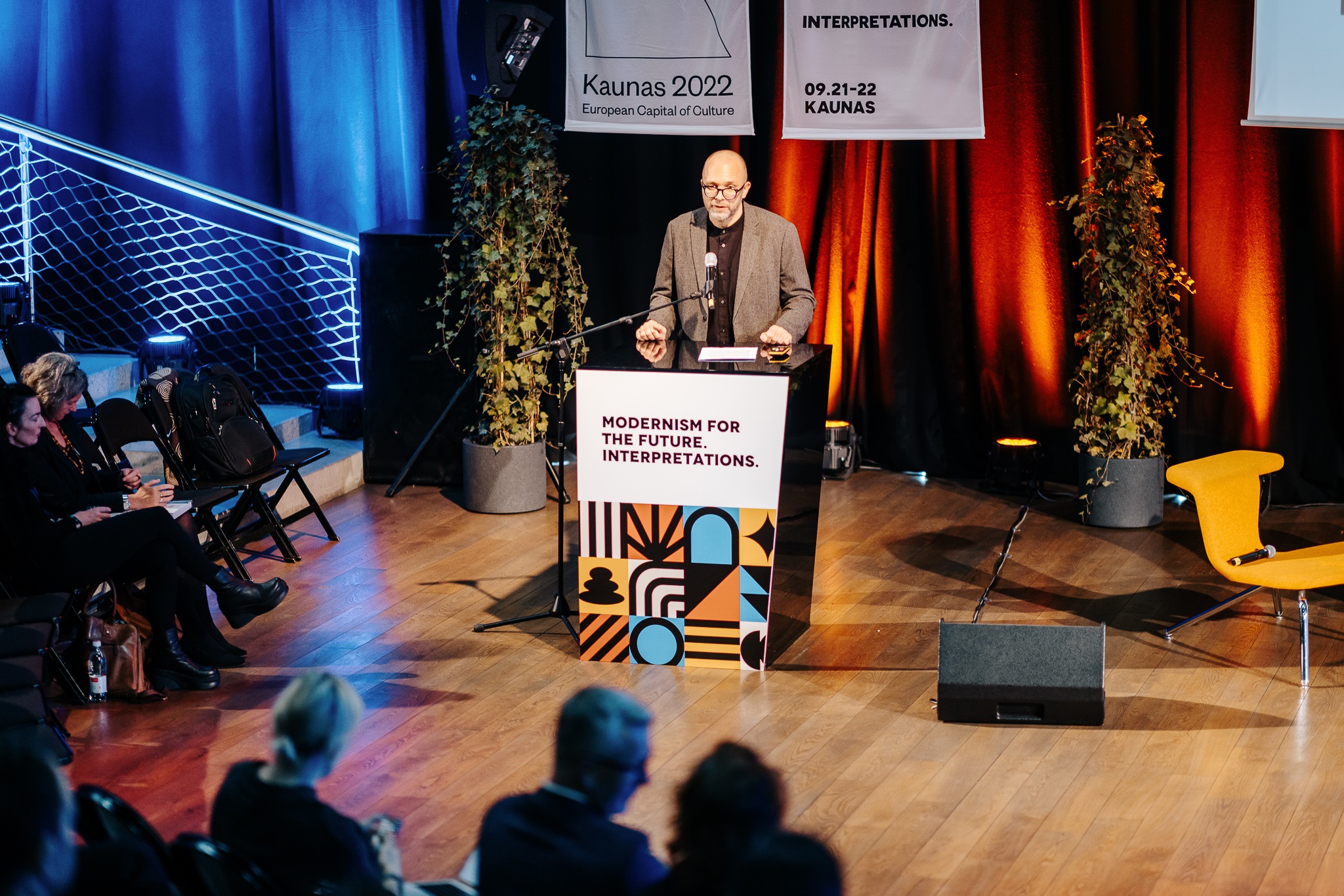
Inspiration is not Only in Buildings
The subtitle of the second edition of the conference was “Interpretations”. Aideen Barry, an Irish artist working with communities worldwide on socially engaged art, opened the programme with a presentation of her stop-motion animation film, “Folds/Pleats”. Its premiere was held on the inaugural night of the conference at the historic Romuva cinema. The two-year-long artistic chain of events was full of coincidences, as well including hours-long workshops on Zoom during the quarantine, iconic Kaunas modernist buildings becoming dancers’ costumes and edible cakes, as well as hundreds of Kaunas residents of all ages who joined the process. The film, inspired by early cinema and animation created behind the Iron Curtain, has already been presented around the world. It is not a documentary but a freely interpreted history of the modern city and the people who created it, enticing even the viewer who has never heard of Kaunas before.
At 3 am New York time, artist, architect and conservationist Jorge Otero-Pailos joined the event in Kaunas. His online talk on art as a way of care and dust and other traces of time in architecture as inseparable layers of its layers received an ovation and was quoted in subsequent presentations. After presenting his project “The Ethics of Dust”, in which the cleaning of the surfaces of historic buildings becomes a pretext for contemporary works of art, the artist talked about his most famous initiative, which took place in the Norwegian capital. Unlike the modernist masterpiece itself, the fence of the US Embassy in Oslo was not included in the list of protected buildings. Otero-Pailos decided to turn this element, which surrounded the embassy after 11 September 2001, into an independent series of sculptures.
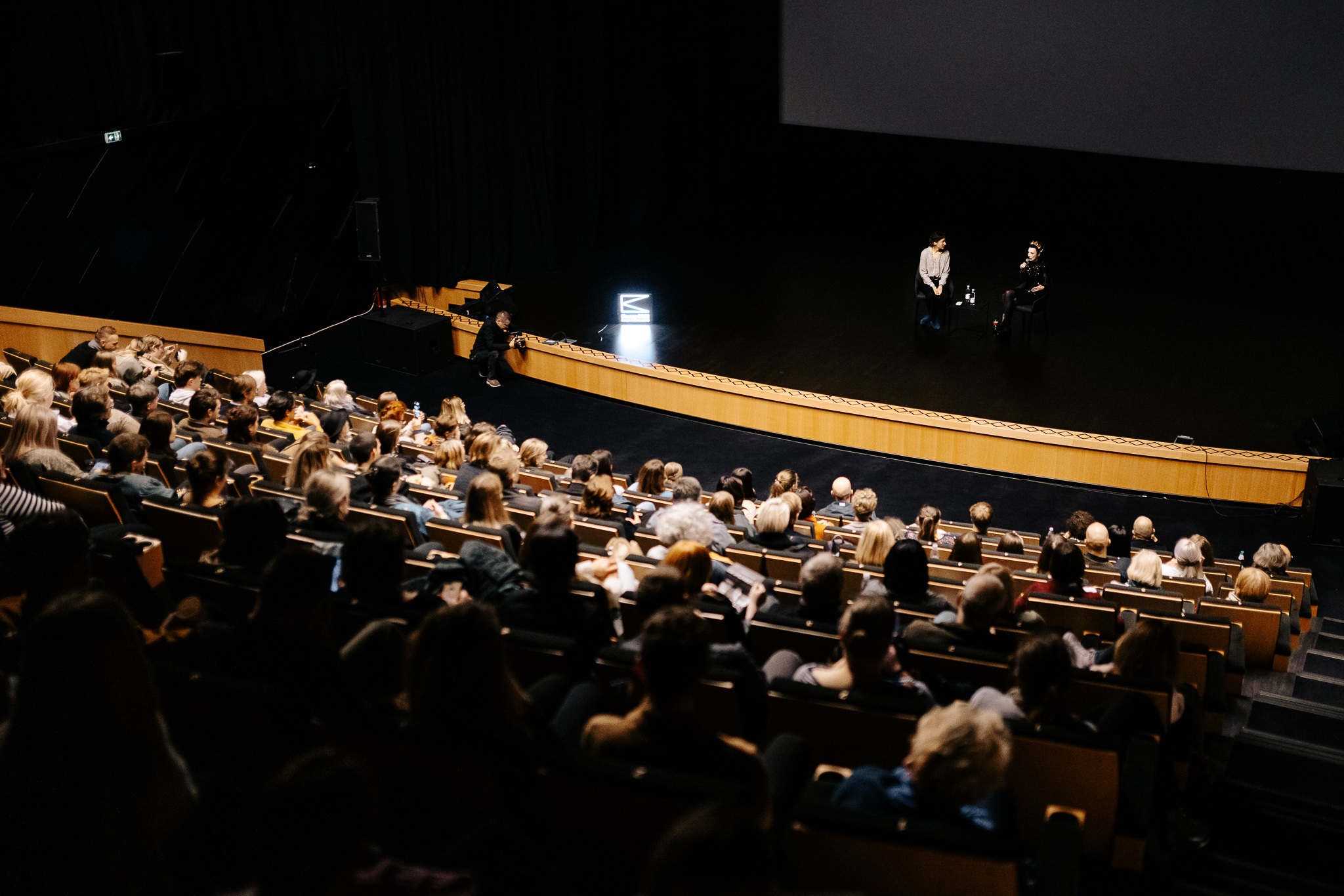
G. Jovaišos nuotr.Subjectivity as a Component of Objectivity
In the afternoon, the conference participants were attracted by a discussion on the concept of subjectivity as an assessment of art, architecture and heritage viewed from different perspectives. Researcher Grzegorz Piątek spoke about the unconditional love of Poles for the interwar period, and thus for the country created at that time, as a breakthrough, a growth, and even a golden age. Contrasting this is the sceptical attitude towards the residential areas, cultural and commercial buildings and other objects that popped up after the Second World War. Paradoxically, the extremely popular Neon Museum in Warsaw only displays the signs of historic buildings, many of which no longer exist today. Lolita Jablonskienė, head of the National Gallery of Art in Vilnius, emphasised the importance of context (or the contexts that have been considered separate until now) in evaluating architecture and art produced in the past decades and the duality of the two. Swiss photographer Nicolas Grospierre, who has been photographing modernist architecture for two decades, spoke of his subjective concept of constructing a narrative through related forms, excluding other factors.
“Mythologizing comes in cycles. It’s interesting to break this cycle, which is possible after defining a set of criteria that could facilitate that break. It is important to look into history objectively as early as possible,” noted Piątekas. “People prefer Stalinist-era because they are better decorated, subjective emotional ties and associative values play an important role here,” added architectural historian Marija Drėmaitė, moderator of the panel.
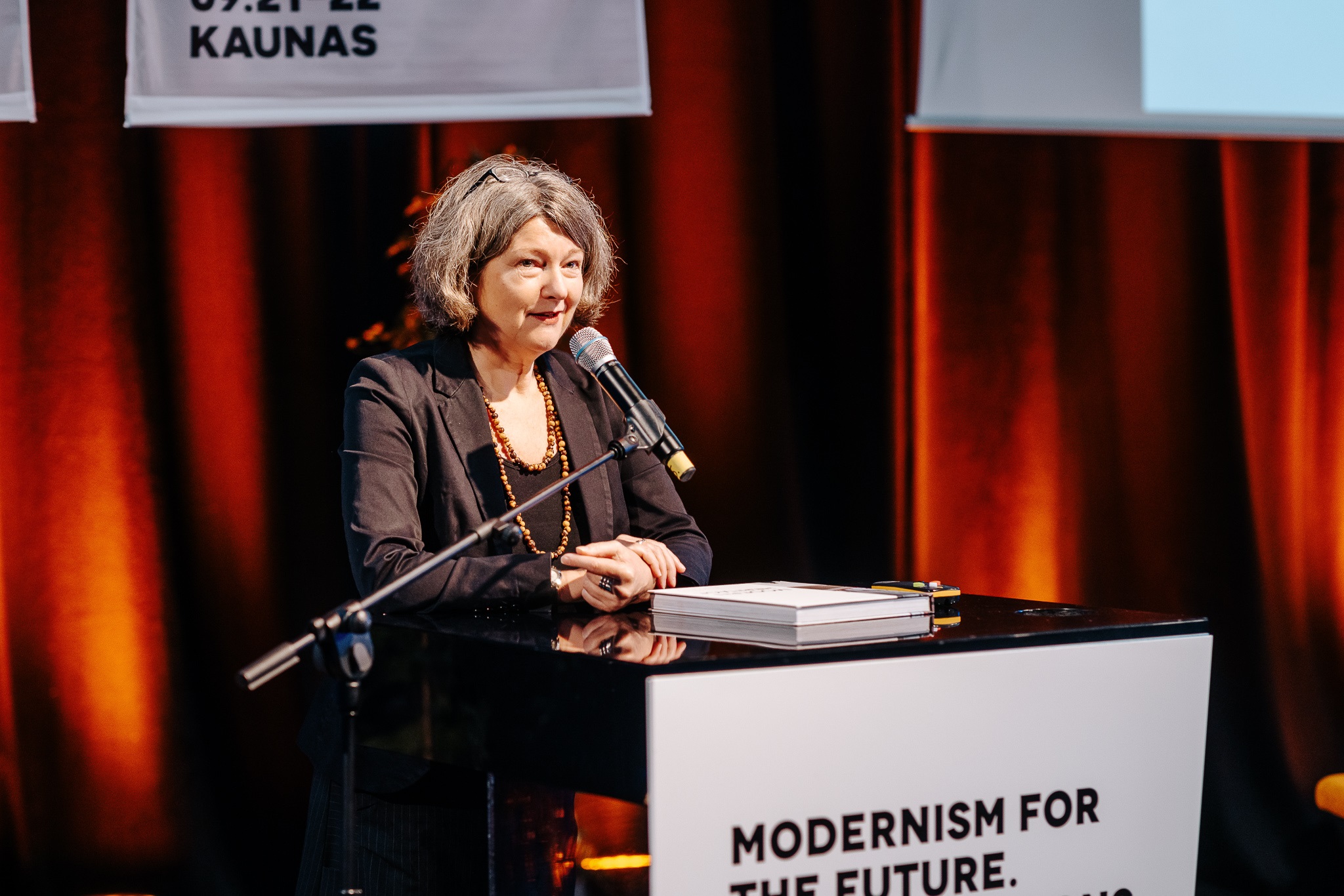
Modernizmo konferencija, G. Jovaišos nuotr.Modernism - a Cause and/or a Product of the Anthropocene?
The heritage of the recent past is paradoxical - it belongs to modernity, but the consequences of modernity pose an existential threat to it. A discussion moderated by Edward Denison of the Bartlett School of Architecture at the University College London (UCL) in the UK invited people to think about modernism as the cause of the current geological epoch. Denison’s colleague Guang Yu Ren presented the Manchuria region in present-day China, a land little known to many present-day Europeans, where modernist cities were planned as early as the late 19th century, as industrial mines were established. In the region, what we consider heritage may, in fact, belong to several nations, including the Russians and Japanese.
The open question of whether the colonists gave anything at all to the African continent, from which they drew their wealth and empires for many decades, and in return imported their way of life, customs and architecture was raised by Maxwell Mutanda of UCL. Linara Dovydaitytė, a scholar at Vytautas Magnus University, presented the object of her research - the nuclear heritage, which is inseparable from the colonial era, as well as the nuclear aesthetics and the interpretation of the industrial heritage in art.
Alessandro Petti online from Sweden presented Decolonising Architecture Art Research, a project he runs with Sandi Hilal. One of their missions is to inscribe the Dheisheh refugee camp in Bethlehem, Palestine, on the UNESCO World Heritage List. Israelis settled in the site of dozens of former villages after 1948. According to Petti, such camps, which are not made of tents but concrete structures, are doomed to permanent temporariness and are built to be forgotten as soon as possible.
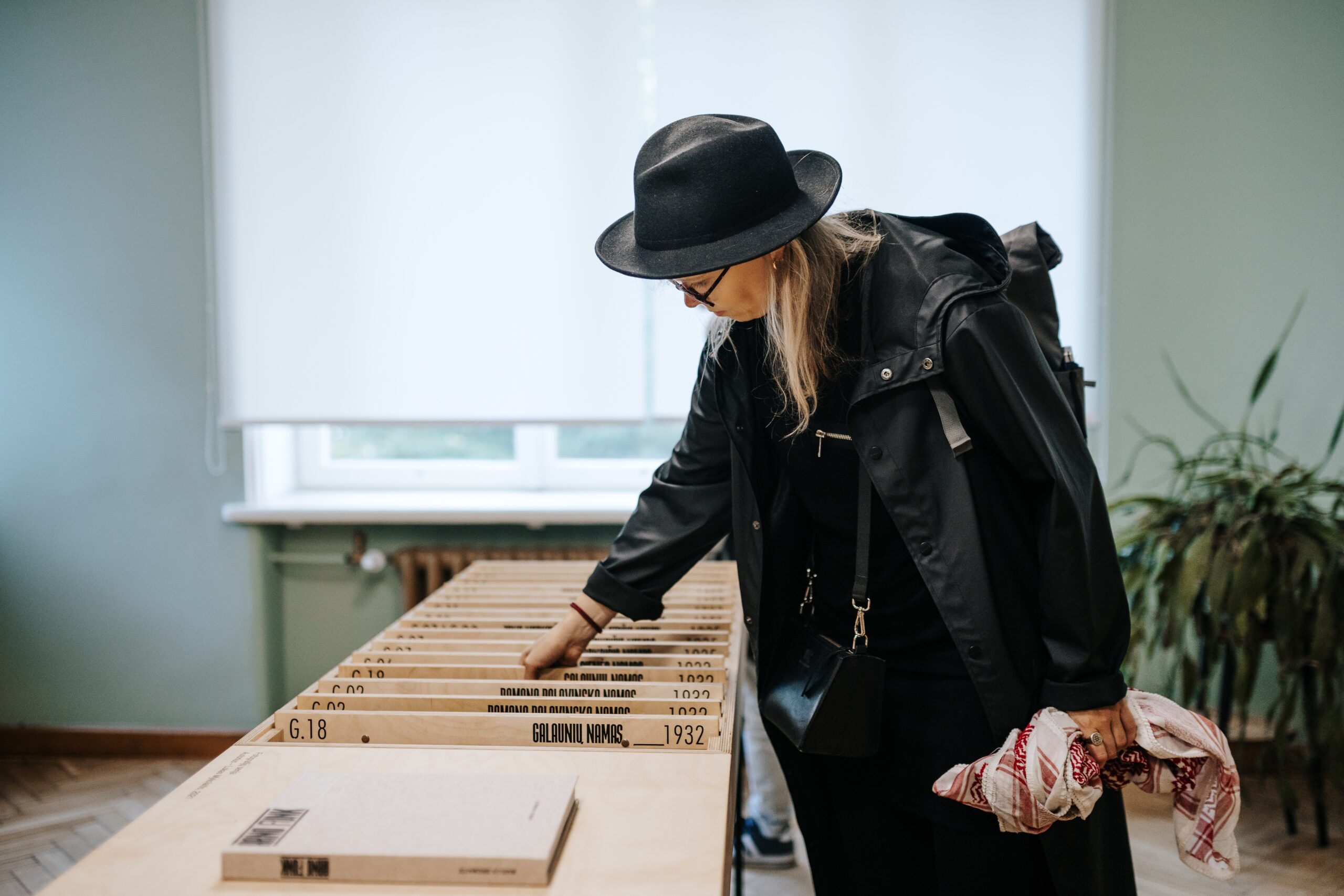
A Dispute about Value - Public or Professional?
“We have spent many years discussing what to do with Soviet apartment blocks. Well, the Russian missiles just destroyed them, so that’s one less question,” Yevgeniya Gubkina, a Ukrainian architectural historian and self-proclaimed architectural activist who hails from Kharkiv, which was severely damaged by the war earlier this year, wryly and very aptly observed. Equally ironic was the British journalist and writer Owen Hatherley, who observed that nobody likes Western leftists coming to Eastern Europe and explaining what Soviet modernism is. Hatherley put forward an equally intriguing theory about the actual Westernness of modern Russian imperialism, reminiscent of colonial powers and their methods.
The debate moderated by Maxime Forest again stressed the geographical and political diversity of modernisms and the absence of a unified public opinion. “Often the debate about what to do with Soviet architecture is only raised by professionals - people are not bothered by it, they are affected by the emotional connection,” mentioned Gubkina. She also reminded us that architecture is just a tool - we do not judge a knife for murder. The thought of architecture and art critic Aaron Betsky, who said: “Buildings don’t talk, so we have to speak for them”, is also relevant here.
Discussions and presentations of the conference “Modernism for the Future. Interpretations” took place on 22 September in the Žalgirio Arena amphitheatre. The recordings and a series of podcasts will be published online. The main conference programme was introduced and followed by additional meetings, exhibitions and other events in various locations in the historic centre of Kaunas. The event attracted architecture and heritage professionals and enthusiasts from a handful of countries. “Modernism for the Future. Interpretations” was the final highlight of the Kaunas 2022 programme dedicated to the actualisation of heritage and curated by Viltė Migonytė-Petrulienė. However, as many conference participants expressed, the international meeting was only an introduction to future joint projects and discussions on multiple modernities.
For the complete Kaunas 2022 programme, please visit www.kaunas2022.eu or the mobile app.
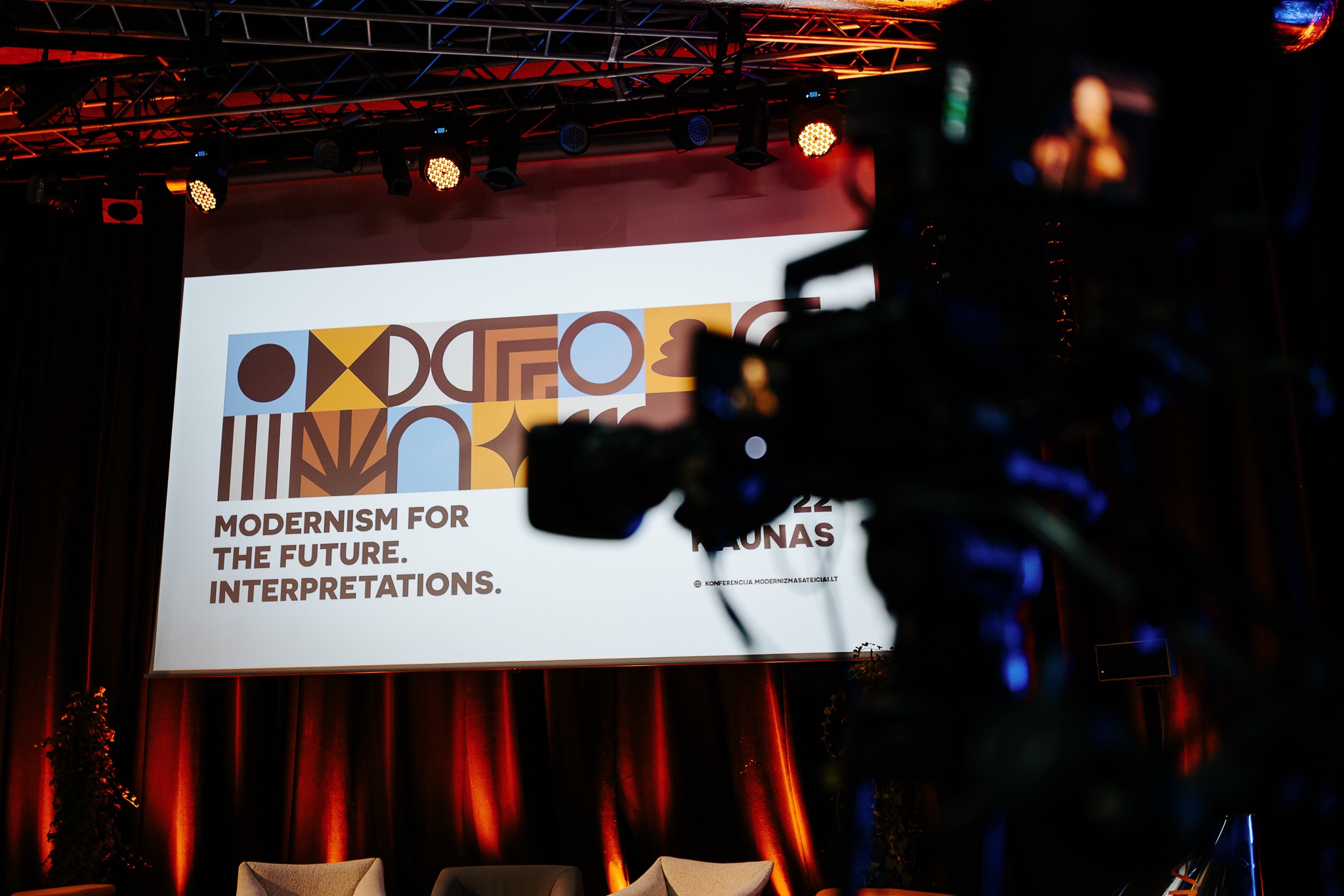
Tebby Ramasike, who will perform at the Ninth Fort: “In ugliness there is beauty and in darkness there is light”
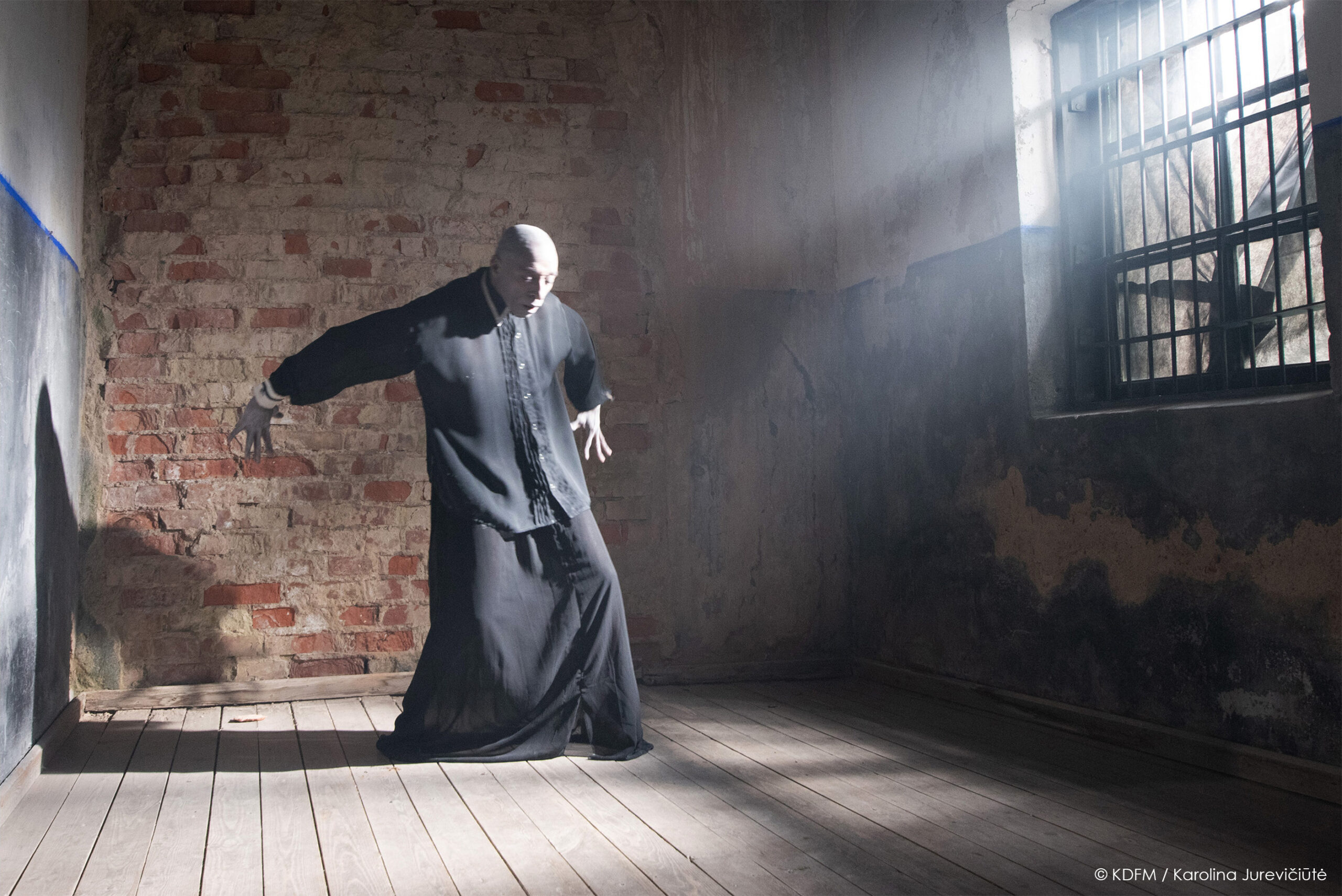
South African-born dancer and choreographer Tebby W. T. Ramasike has three decades of experience working on a professional stage. Ramasike doesn’t avoid drawing resources from painful historical events, which he combines with his personal experience and expresses in body language. On 24th of September, 2022, he will perform the performance “The Wreckage Of My Flesh” at Kaunas Ninth Fort Museum. In order to learn more about the performance, the dance in the context of traumatic experience, and the importance of remembering historical events, we invite you to read the interview with Tebby Ramasike.
The performance “The Wreckage Of My Flesh” is a part of the international project “ECCE HOMO: Those Who Stayed”, which is organised by Kaunas Ninth Fort Museum and Kaunas European Capital of Culture 2022.
On 24th of September, you will perform "The Wreckage Of My Flesh" at the Ninth Fort. First of all, I would like to ask you what impression and emotions did you have after visiting the Ninth Fort for the first time in 2021, during the preparation for the project?
That was quite an overwhelming experience. I saw pictures before that Bruce [visual artist Bruce Clarke] had shared with me, so I expected a different place. But when we were there, I just felt – Wow! At first, I didn’t know how to express it. I was so overwhelmed… I felt there was so much pain… There was a voice inside of me that was screaming out of pain, there was a voice screaming out of hope. It actually exceeded my expectations. I felt I was standing on a sacred ground. There was this intense and unique energy. It was not the structure of this place that actually caught my attention, but the surroundings, the environment, the trees around there... The trees became a representation of this symbolic nation of people that lost their lives there. There was the spirit that was living.
What was very interesting for me, is that I was not walking into a museum. I was not walking into an exhibition space. I was drawn into the living soul of humanity. Humanity that has been lost. I just connected with something there and creative ideas just flew immediately into my head. And I said, “I think I came to the right place. This is where I belong, this is what I wanna do.” My soul, my heart was pumping, and my spirit just wanted to live, wanted to grab, wanted to fly. It was so enriching for me.
Could you please shortly present your performance, which you will perform at the Ninth Fort?
I will go back to how the project started. In 2018, I was performing in a Butoh and Acousmatic Music festival in Paris. I happened to perform to Jacob’s composition. There was another Butoh dancer Denis, who was the original collaborator with me, but he unfortunately became very ill. He was performing to René’s composition. I was challenged by Jacob’s composition, which was short, complex and something that I’ve never dreamt of performing to. It was difficult, but during the performance everything just came together. I liked Denis’ performance and the composition by René. Then I said to the three of them that my idea is the four of us to be in the same space, we as dancers creating the dance, and you as composers composing at the same time. I proposed to them to collaborate, it was a small project for Amsterdam.
Then I started to develop ideas about the Holocaust and Apartheid. At the same time, I was writing a poem, and the title was “The Wreckage Of My Flesh.” This poem was inspired by seeing images of the Holocaust. I just put everything – the Holocaust images and the Apartheid images – together. At that time, I got very ill. I was hospitalised, I had 3 surgeries. I was in a hospital and all these images were coming back to me, and I felt like I was a part of that. My body was just disintegrating. I felt that my flesh was becoming wrecked, so I just said, “The Wreckage Of My Flesh.”
Next thing was – what do I do with this? What was the main focus in this project? Is it about the Holocaust? Is it about Apartheid? Or is it about me hospitalised and dying in my hospital bed? Being a Butoh practitioner, I’m always working a lot with the body. And I say – it was about the body.
When I saw my parents in South Africa after a long time, their bodies were deformed, changed. Then I started to think about the people in the extermination camp. When their bodies were put in these ovens, what happened? I started to think about people who were banned in South Africa. My very best friend from growing up – I saw him being tortured and burned, I saw his body… So, this was about the disintegrating body that is changing, that is being deformed.
Having experienced being in that hospital and fighting, affected me psychologically. It was a struggle. At the same time, I had to perform a piece. It was about dealing with the resistance to oppression, the resistance to the struggle. It was also about hope, about the fight against something, about resilience.
Thinking about these bodies as they were in the ovens or burning, I thought of the voice of their silent screams. I had this image of the body screaming. The body becoming the voice and screaming out. That voice became my inner self territory. For me, dance became my saviour, my healing notion. These voices in my head became like – “keep on dancing, keep on dancing and never stop to dance.” I had to dance to survive. I keep saying until today, if I didn’t dance, I probably would have kissed this life goodbye a long time ago. Dance has helped me to keep on going. Also, through dance, it helped me to resist. And never just stop and have that hope.
People ask if this piece itself is about the Holocaust. It’s not. And it’s not about Apartheid. Even though I’m drawing resources from this human history of horrific events that happened in the past (unfortunately, they are still happening now), it’s also about the social crisis that we, as human beings, are finding ourselves in. It’s a silent way of saying something with the body, bringing out that pain, bringing out that suffering, addressing something that many would not actually address, through dance being the voice of the people who have been silenced.
I decided in this piece to use the genre of Butoh, which carries the body’s resistance to gravity. For me, it’s a strong way of taking the body out of the comfort zone into an unknown territory. At the same time, it’s something about an inner freedom, which is experienced through Butoh or through the ritualistic dancing and even through electronic music, which also has its own way of resistance.
You have mentioned the Butoh genre. What thoughts and feelings do you have during the performance of Butoh dance? How does Butoh stand out from other genres?
It’s a transcendence into another world. I work a lot with spirituality, and I try to connect this with ritual dance and with my Butoh practice. For me, it’s always like a spiritual journey. I always have a feeling that I’m transcending from one life to the other. I’m transcending from the existence into the non-existence.
Butoh gives me this feeling of going into a deep subconscious world. I’m on a plain of that higher level of spirituality or maybe existence. But at the same time, I always have questions at the back of my head. Where are you going with this? Every question that I have raises a different feeling, a different thought. So, it’s never the same.
It’s still a growing thing inside of me. I cannot say I’m an excellent Butoh dancer or I’m a bad Butoh dancer. I’m a Butoh practitioner, I just practise. I developed my own concept of Afro-Butoh. I could say Butoh has actually enriched my dance career. I’m looking at dance and myself as a dancer from a different perspective, understanding my body, my thoughts.
How does Butoh genre stand out from the other genres? Well, the first thing, people are afraid of it. [laughing] When we talk about Butoh, they say, “Oh, is that one about ugly bodies and death?” It’s the way people respond to Butoh. People don’t want to deal with something that has to do with pain, suffering and death. Especially with death and darkness. I always say to people, in that ugliness there’s beauty, in that darkness there’s light.

Let us pause for a moment to consider beauty, light, and dance – what, in your opinion, is the dance in the context of tragedy and traumatic experiences? A tool to empathize with other people's experiences? A way of healing?...
It’s not an easy question to answer, but I will try. If I look at it from the general point of view, it’s not that very easy, but for myself personally, it’s actually easy to work with dance and express traumatic or tragic experiences, because I dealt a lot with that. Even though people always say that I’m very happy, my world is actually tragic or traumatic.
I take a lot of people’s tragic and traumatic experiences into me, I listen to their stories. Sometimes I do make their stories my story. I basically put myself into their situation. When I start to do that, then sometimes I can create something out of that. Through dance it’s easier for me to express this. I also find that through dance it helps to heal myself. I could be caring so much and everything could be happening to me, but once I start to put this into dance, I feel this healing notion. As people have said to me, I’m bringing light into the darkness of their lives and I’m healing them. That’s why I’m always looking at my work from that spiritual healing notion.
One should not say, “Oh, my piece is gonna be about traumatic experiences.” I think if I start to say that, my dancers will rush out of the door. And I think if I tell the public that, they are not gonna come and see the performance. [laughing] It’s something that you keep into the work. A traumatic experience is not something that you put on the table just like that. It’s inside of somebody. Everybody deals with trauma in a different way. Every traumatic experience is on a different level as well.
In some of my dances, actually, I do express a lot of my traumatic experiences, which scares me at times. Then the problem becomes, what is the audience feeling when I go through a traumatic stage? Dealing with that through dance also helps me to release something, it heals me, it cleanses me. It’s like a ritual for me. It becomes like a ceremonial journey. Dance for me, and I think for many people, is healing, therapeutic. It’s a shame that many people don’t see it that way. They only see it as a hobby, as just dancing. They don’t realise that when you dance, there is something inside of a person that is happening. Dance brings joy, life, light, dance heals many people.
Let us go back to your performance at the Ninth Fort. An international team is contributing to it. Could you please introduce your team members?
I’m just gonna make a short introduction about them. I will start with René. René Baptist Huysmans is from Amsterdam. He is a composer and sound artist. He specialises in collages of electronic sounds and field recordings.
Jacob Elkin is from New York in the USA. He is a multi-instrumentalist. He is teaching at the United Nations International School and he is a specialist in electronic microtonal music. Don’t ask me what that is… This is why his music is very complex. All these terms… It’s not the same electronic music that we know. [laughing]
Denis Sanglard was the original member of the team, but because of health problems, he couldn’t continue with the project. He’s a Butoh dancer and an actor. He’s still very much involved in the piece, but more like on the sideline, as a coach or just giving feedback.
And then we have Ellen Knops, who is from Amsterdam. She is our lighting designer, and she loves to improvise and play around with the location. She’s the person who goes to a location and sees what the energy of the location is and what it gives her to do with the lights. She worked on many of my productions. She’s a fantastic person to work with.
Then we have Anne Oomen. She’s from Noord-Brabant. She’s a Dutch fashion textile designer. She specialises in silk. She works a lot with dancers, with movement. She was also a dancer herself as well. She translates a fascination for dance into the smooth movement of silk. Her work is very interesting to see on the body of the dancer. That’s also why I chose her. For many years we wanted to work together, this is finally the first project. She gets her inspiration from abstract painters and modern artists.
And then we have Elizabeth Damour. She’s from Paris. She’s a French Butoh performer, psychotherapist. She enjoys sharing, transmitting and connecting with the continuous development process. She works with young people as well. Elizabeth actually first joined the project as my assistant, not as the dancer. Then eventually, when Denis couldn’t continue, the only solution was Elizabeth.
Now we have Zo Fan. She’s an external artist in the project. She’s actually Bruce’s assistant. She was suggested by Bruce to be our videographer. She’s from Singapore, but she lives in Paris. She’s a film director, photographer and videographer.
Many people contributed to the project as well. It’s not only us; there are other people who are involved from the outside.
Your performance will be closely related to the exhibition by the artist Bruce Clarke exhibited at Kaunas Ninth Fort Museum – the dance will be performed in its background. What is the relation between the exhibition and the performance? How do they complement each other?
It’s interesting, because I didn’t know Bruce in the beginning. Frank [Frank Schroeder, the director of the National Museum of Resistance and Human Rights] knew my work and he knew Bruce, so he had invited Bruce to do the exhibition [in Luxembourg]. But I think when he saw Bruce’s work, then he saw me. The first time I saw Bruce’s sculptures, it was like: “Where did you find me?” [laughing] I also saw myself. I think it became like an instant connection.
What actually attracted me to Bruce was his background, which was like born in the UK, having a Jewish family, and [relations] with Lithuania, and the family in the Holocaust, and living in South Africa, being part of the Apartheid struggle. Then I saw his works and I was totally seduced. I wanted to know more about his works and I started to have ideas. What also grabbed me was his work in Rwanda with the genocide. I was just thinking, “These all are traumatic. These tragic situations that brought up a lot of trauma in people’s lives.” And I liked this because this was Tebby. [laughing] So, I thought, “I’m not going to have fear of actually trying to relate to his work. I’m just going to be an open book.”
In the past, I used to have artists that I would dance what they have painted or their sculptures. But now it’s different. We try to tell our stories in a different way and yet complement each other. What we also decided to devise, is this inter-dialogue between me and these sculptures, how I use them, because they have to be another performer.
This is something very interesting about the Ninth Fort Museum, it’s something that actually came to my mind: if we have these sculptures of Bruce and I’m relating to this installation and leaving the space, what happens? My idea is that you build up this relationship with these sculptures and you leave, and that relationship should still stay there even if my physical body is not there. It should stay within those sculptures because they’ve been part of the performance. It’s something that is possible because I always have this thing that an energy, that has been established, even when you leave the space should stay. I mean, when I went to the Ninth Fort Museum, even when I left, I could still breathe that energy.
What happens to me? This is another thing, the relationship between the installation and the dance. What happens to me as I dance with those sculptures, as I connect to those sculptures? What happens to me afterwards when I leave as a dancer? Do you just leave and then forget about them? No. I could choose to do that, but I don’t want to do that, because they are alive. It’s a major piece of artwork, so very important. I really have found something powerful in Bruce’s work that can actually enrich the dance.
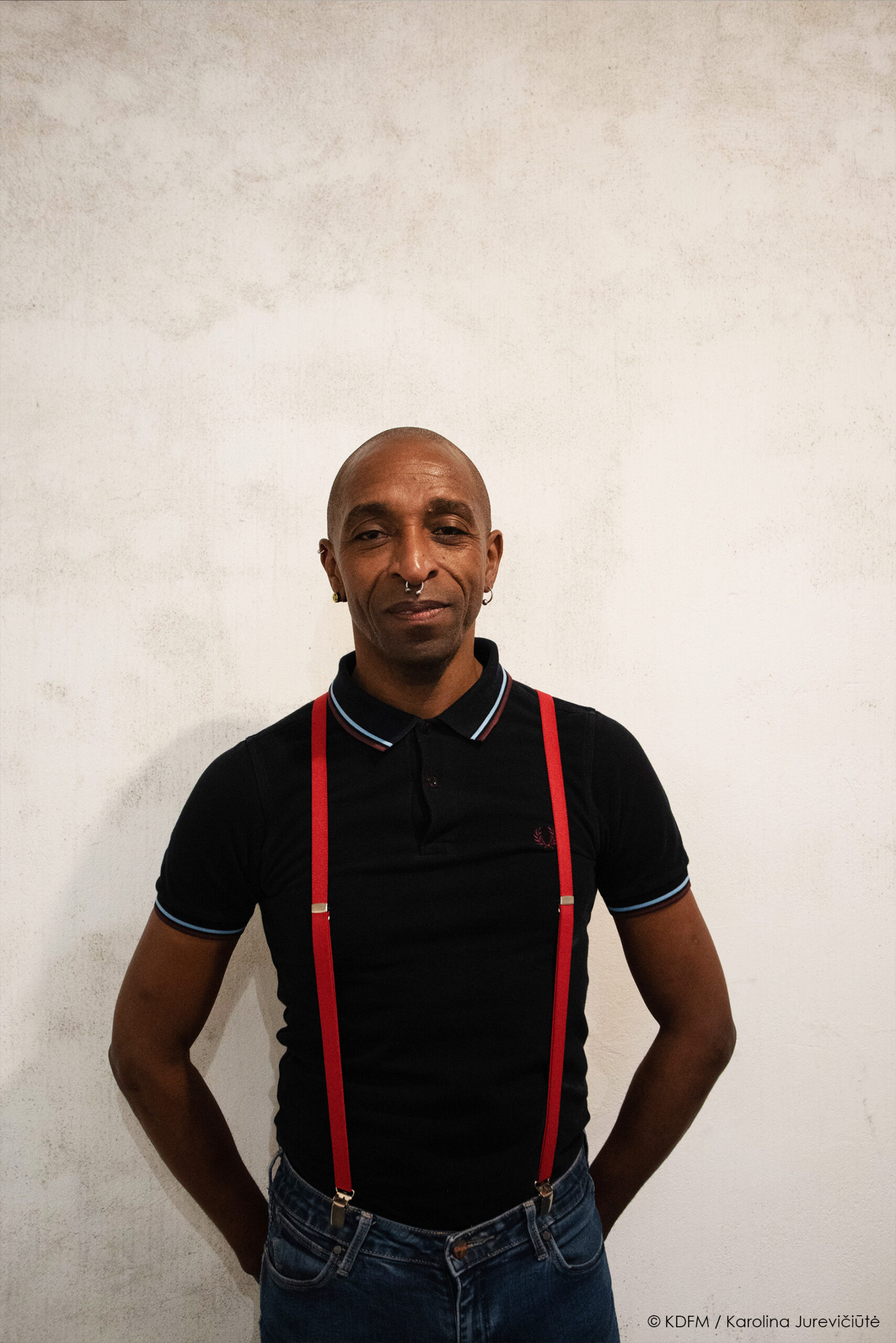
Finally, the last question – why, in your opinion, it is important and necessary for today's person to remember traumatic experiences such as the Holocaust?
What happened in the past and what happened during the Holocaust is building our future. It’s part of our history. Whether you are Jewish, whether you are African, whether you are European... It’s part of us, it’s not only part of the Jewish community. It’s part of the world we live in. And, unfortunately, what happened during the Holocaust is actually coming back – it’s happening now. Even on a different scale, even in a different way… But I see it growing. I see it coming back in France: the nationalists are coming back. Then there’s Putin. He wants to be the master race, like Russia has to be the master race again as Hitler wanted Nazi Germany to be the master race.
Of course, people don’t want to deal with trauma, they want to distance themselves from the Holocaust. It was not a tragic story, it was really traumatic, something that kills the spirit of humanity. To be able to keep that as a memory is to believe, to understand it and to put it in that place of importance. It’s not just an event that happened and you leave it behind. It’s an important event in our historical lives as human beings. And it's really necessary for the generation now, our generation in the past, the generation in the future, to understand it, to remember it, to know that it happened. Because it will happen. We have already been saying that history repeats itself.
I just hope that the world will open up, believe, and finally say, “We understand,” and stop being in denial. The Holocaust did happen, traumatic experiences that people have gone through have happened and we cannot deny that. It’s a shame, because that denial is actually bringing up a lot of violence, which is scary.
The interview was prepared by Henrika Kryževičienė
The performance “The Wreckage Of My Flesh” by Tebby W. T. Ramasike will be performed at Kaunas Ninth Fort Museum on 24th of September, 2022. More information about the event can be found at Kaunas Ninth Fort Museum website: www.9fortomuziejus.lt/?lang=en
The project is a part of Kaunas European Capital of Culture 2022 programme.
The project is implemented by Kaunas Ninth Fort Museum and Kaunas 2022
Information partners: LRT, “Kauno diena”, KB “Katos grupė” | ACM
Partners: National Museum of Resistance and Human Rights (Luxembourg), Esch 2022
Kaunas School of Arts celebrates its centenary: invites to an exhibition and international conference
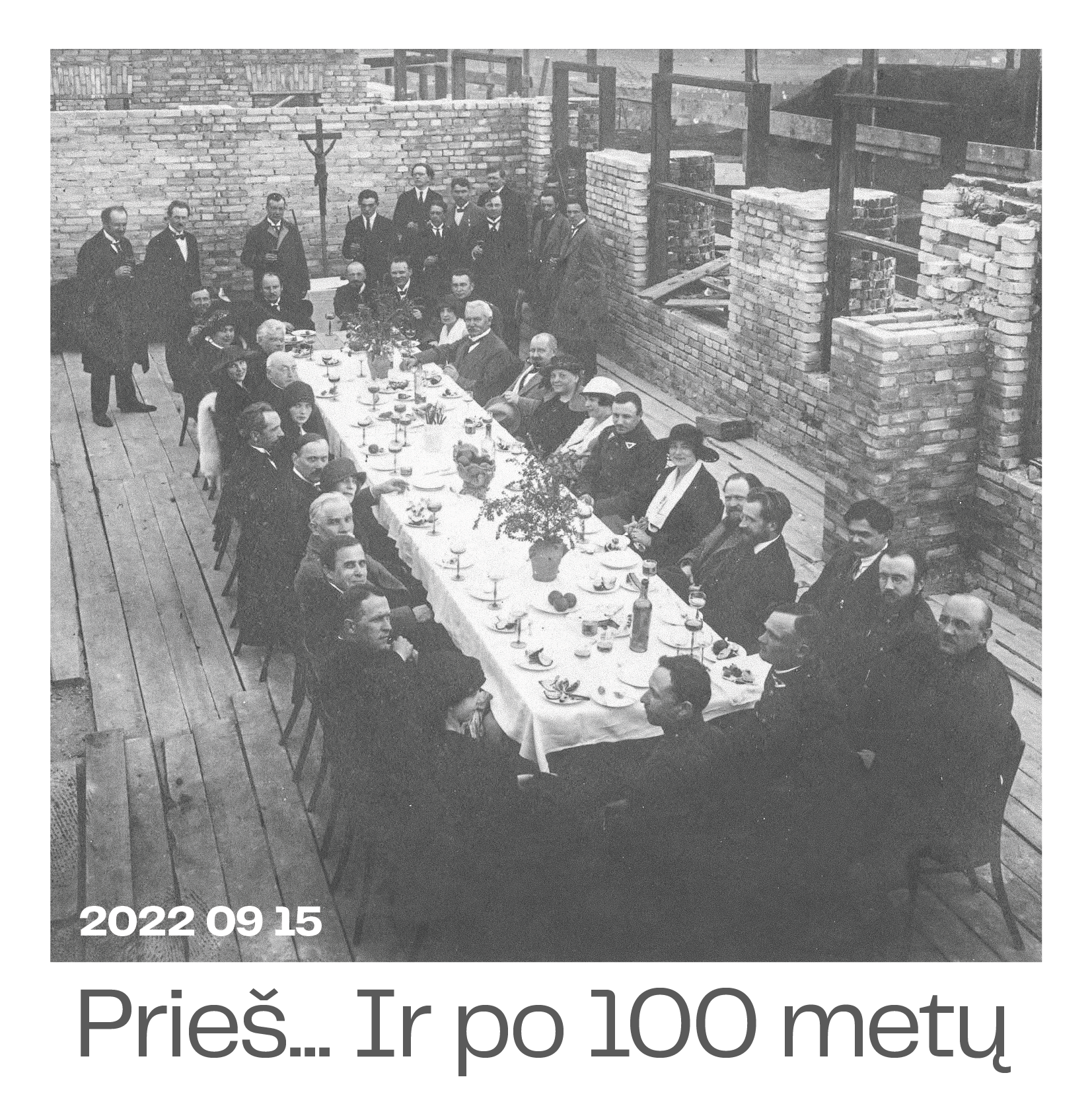
Kaunas School of Arts celebrates its 100th anniversary in 2022. To mark it, the international scientific conference “Art for a Modern Country in a Modern City” and the supporting exhibition “Before ... and after 100 years” will also be part of the events of Kaunas European Capital of Culture 2022.
The occasion marks the importance of higher studies in fine arts for modern art culture and the impact on the subsequent development and transformation of that culture.
The international scientific conference, dedicated to the anniversary, invites the participants to explore the significance of art studies for modernity; highlight their links with the processes of formation of modern states and cities, and discuss the historical, current and future state of education in fine arts and its relevant issues. It is expected to reflect on the history of the Kaunas School of Arts, its origins and evolution in the context of the city’s historical, political or economic changes and reveal parallels with other European art schools of the first half of the 20th century and the modernist movement in a new way. The conference also aims to highlight the activities of the personalities who founded the School and studied here – artists, pedagogues, architects, and art historians – and the links between their creative work and the local, national and global context of fine arts and reveal the origins and continuity of the traditions of the Kaunas School of Arts.
Conference dates: 15 September, 9 a.m. – 5 p.m. and 16 September, 9:30 a.m.- 4 p.m.
Venue: the National M. K. Čiurlionis Art Museum, Music Hall (V. Putvinskio Str. 55, Kaunas).
Conference speakers: Prof. Dr habil. Antanas Andrijauskas (LT), Prof. Dr Stanislavas Mostauskis (LT), associate prof. Dr Ramutė Rachlevičiūtė (LT), associate prof. Dr Aušrinė Cemnolonskė (LT), Dr Stella Pelše (LV), Margus Meinart (EE), Dr Theodor Liho (BG), Yaroslav Kravchenko (UA), Lina Mumgaudytė (LT), associate prof. Dr Aušra Vasiliauskienė (LT), Rūta Marija Purvinaitė (LT), associate prof. Dr Inese Sirica (LV), Šelda Puķīte (EE), Dr Lijana Natalevičienė (LT), Prof. Dr Raimonda Simanaitienė (LT), Dr Aistė Dičkalnytė (LT), Daina Zozaitė (LT), associate prof. Dr Odeta Žukauskienė (LT), Dr Vilma Gradinskaitė (LT), Vaida Sirvydaitė (LT), Lina Hall (LT), Ilona Mažeikienė (LT), associate prof. Dr Rasa Butvilaitė (LT), associate prof. Dr Lina Preišegalavičienė (LT), associate prof. Dr Vaida Almonaitytė-Navickienė (LT).
More information about the events is available here.
Šimtmetį švenčianti Kauno meno mokykla kviečia į parodą bei tarptautinę konferenciją

Kauno meno mokykla 2022 metais mini 100 metų jubiliejų. Jam pažymėti skirta tarptautinė mokslinė konferencija „Menas moderniai šaliai moderniame mieste” ir lydinti paroda „Prieš... ir po 100 metų“ įsilies ir į Kauno Europos kultūros sostinės 2022 metų renginius.
Šia proga pažymima aukštųjų dailės studijų reikšmė moderniai meninei kultūrai ir poveikis vėlesnei tos kultūros plėtrai bei transformacijai.
Jubiliejaus proga rengiama tarptautinė mokslinė konferencija kviečia susitelkti į dailės studijų reikšmę modernybei ir išryškinti jų sąsajas su modernių valstybių bei miestų formavimosi procesais, aptariant dailės mokymo istorinę, esamą ir būsimą padėtį, nagrinėti dailės edukacijos klausimus. Siūloma naujai apmąstyti Kauno meno mokyklos istoriją, jos ištakas ir raidą miesto istorinės, politinės ar ekonominės kaitos kontekste, atskleisti paraleles su kitomis XX a. pirmos pusės Europos meno mokyklomis ir modernizmo sąjūdžiu. Konferencija taip pat siekia aktualizuoti mokyklą kūrusių ir joje besimokiusių asmenybių – dailininkų, pedagogų, architektų, dailės istorikų – veiklą, išryškinti jų kūrybos sąsajas su vietos, nacionaliniu ir globaliu dailės kontekstu; atskleisti Kauno meno mokyklos tradicijų kilmę ir tęstinumą.
Šimtmečiui pažymėti pristatoma paroda „Prieš... ir po 100 metų“
Aplinkos kaita ir kontekstai turi įtakos meno vystymuisi. Menas ypač reaguoja į vietos ar situacijos pasikeitimus. Per šimtą metų įvykusiai kaitai (naujų technologijų atsiradimas, atvirumas pasauliui, globalizacija ir t.t.) atliepia ir profesionali kūryba. Išlaikydama Kauno meno tradicijas ji sparčiu žingsniu žengia su šiuolaikiniu gyvenimu, atspindėdama visas jo realijas.
Paroda sudaryta iš Nacionalinio M. K. Čiurlionio dailės muziejaus rinkiniuose esančių Kauno meno mokykloje dirbusių pedagogų – menininkų kūrinių ir šiuo metų dirbančių ir kuriančių Vilniaus dailės akademijos Kauno fakulteto dėstytojų – menininkų. Ekspozicijoje žiūrovams pristatomi kūriniai, sukurti beveik prieš šimtą metų ir dabar, jau po šimto metų, atskleidžiant kūrybinių principų kaitą ar panašumus plastikos ir technologiniuose sprendimuose. Žiūrovui siūloma susipažinti kaip aplinka ir kontekstas šimtmečio bėgyje keitė ir keičia meno suvokimą ir išraišką, kuri atsispirdama ir tęsdama Kauno meno tradicijas įsipina į pasaulio Didįjį Peizažą.
Konferencijos datos: rugsėjo 15 d., 9:00 – 17:00 val. ir rugsėjo 16 d., 9:30 – 16:10 val.
Konferencijos vieta: Nacionalinis M. K. Čiurlionio dailės muziejus, Muzikos salė (V. Putvinskio g.55, Kaunas).
Konferencijos pranešėjai: prof. habil. dr. Antanas Andrijauskas (LT), prof. dr. Stanislavas Mostauskis (LT), doc. dr. Ramutė Rachlevičiūtė (LT), doc. dr. Aušrinė Cemnolonskė (LT), dr. Stella Pelše (LV), Margus Meinart (EE), dr. Theodor Liho (BG), Yaroslav Kravchenko (UA), Lina Mumgaudytė (LT), doc. dr. Aušra Vasiliauskienė (LT), Rūta Marija Purvinaitė (LT), doc. dr. Inese Sirica (LV), Šelda Puķīte (EE), dr. Lijana Natalevičienė (LT), prof. dr. Raimonda Simanaitienė (LT), dr. Aistė Dičkalnytė (LT), Daina Zozaitė (LT), doc. dr. Odeta Žukauskienė (LT), dr. Vilma Gradinskaitė (LT), Vaida Sirvydaitė (LT), Lina Hall (LT), Ilona Mažeikienė (LT), doc. dr. Rasa Butvilaitė (LT), doc. dr. Lina Preišegalavičienė (LT), doc. dr. Vaida Almonaitytė-Navickienė (LT)
Parodos atidarymas: rugsėjo 15 d., 18 val.
Paroda veiks: nuo 2022 m. rugsėjo 16 d. iki 2023 m. sausio 29 d.
Parodos vieta: Nacionalinis M. K. Čiurlionio dailės muziejus (V.Putvinskio g. 55, Kaunas).
Parodos menininkai, dalyviai:
Justinas Vienožinskis (1886–1960), Adomas Galdikas (1893–1969), Stasys Ušinskas (1905–1974), Antanas Gudaitis (1904–1989), Antanas Samuolis – Samulevičius (1899–1942), Viktoras Vizgirda (1904–1993), Juozas Zikaras (1881–1944), Jonas Mikėnas (1899–1988), Viktoras Petravičius (1906–1989), Adolfas Vaičaitis (1915–2015), Mastislavas Dobužinskis (1875–1957), Vytautas Bičiūnas (1893–1943), Vytautas Kazimieras Jonynas (1907–1997), Liudvikas Strolis (1905–1996), J. Steponavičius (1907- 1996) Marcė Katiliūtė (1912–1937), Telesforas Kulakauskas (1907–1977).
Arūnas Vaitkūnas (1956–2005), Laima Drazdauskaitė, Audronė Petrašiūnaitė, Pranas Griušys, Eimutis Markūnas, Aušra Vaitkūnienė, Aleksas Andriuškevičius, Andrius Zakarauskas, Petras Lincevičius, Jovita Aukštikalnytė-Varkulevičienė, Povilas Ramanauskas, Darius Rakauskas, Sandra Kvilytė, Milda Gailiūtė, Rosanda Sorakaitė-Ramanauskienė, Rimas Mulevičius, Evaldas Mikalauskis, Rolandas Rimkūnas, Tadas Vosylius, Alfonsas Vaura.
Rengėjai: Vilniaus dailės akademijos Kauno fakultetas, Vilniaus dailės akademijos Dailėtyros institutas, Kauno kolegijos Menų akademija, Nacionalinis M. K. Čiurlionio dailės muziejus
Partneriai: Kaunas – Europos kultūros sostinė 2022, Lietuvos dailės istorikų draugija
Visą renginių programą rasite čia.


